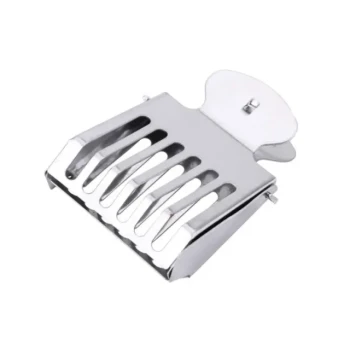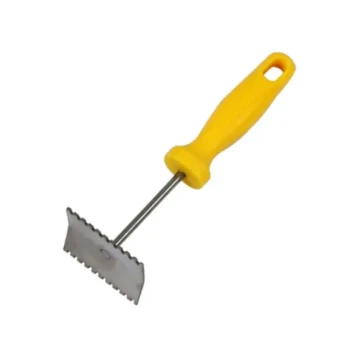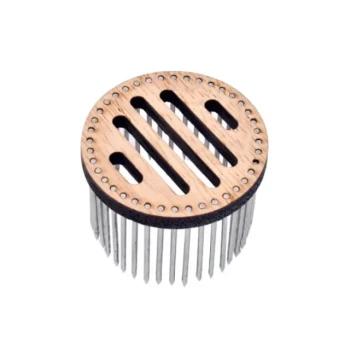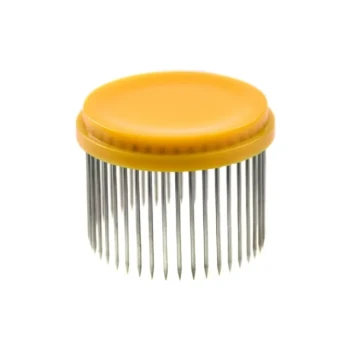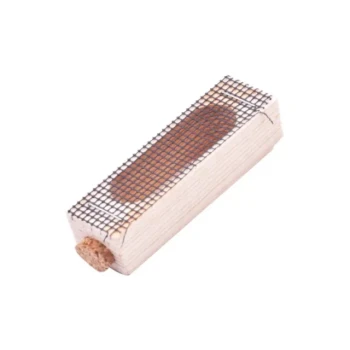Once a robbing frenzy begins, your immediate actions determine the survival of your colony. While an entrance reducer seems like a logical first step, it is not an effective tool for stopping a robbing event that is already in progress. It's a preventative measure that is easily overwhelmed once the attack is underway.
The core issue is that an entrance reducer only narrows the battlefield; it doesn't eliminate it. To stop active robbing, you must disrupt the robbers' attack pattern and make the entrance unrecognizable, a job for which a robbing screen is specifically designed.
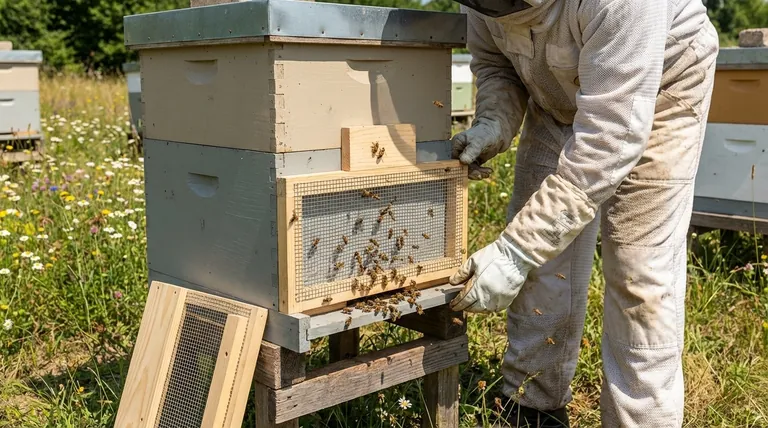
Why Simple Reduction Fails During an Active Robbing
When a hive is being robbed, the situation has moved past simple defense. The attacking bees are highly motivated, have pinpointed the entrance, and have communicated its location to their hive mates.
The Robber Bee's Mindset
Robber bees are not casually looking for nectar; they are on a mission. They have already identified a weak colony and are committed to plundering its resources.
A small opening does not deter them. It simply concentrates the fighting into a smaller space, creating a chokepoint where the defenders can be overwhelmed by sheer numbers.
Overwhelming the Guards
The guard bees of the defending colony will fight to the death, but they are often outnumbered. A reduced entrance forces a head-to-head battle that a weak or small colony is destined to lose against a larger, more aggressive robbing force.
The "Scent Trail" is Already Established
Robbing bees mark the entrance with pheromones, creating a "scent map" that guides more robbers to the exact location. An entrance reducer does nothing to remove or obscure this powerful chemical signal.
The Superior Strategy: The Robbing Screen
Unlike a reducer, a robbing screen works by changing the rules of the engagement. It uses bee behavior to confuse the attackers while allowing the resident bees to continue to come and go.
How a Robbing Screen Works
A robbing screen is a device that covers the original hive entrance. It has a new opening, typically at the top, that allows the colony's bees to exit and enter. The bottom of the screen is often made of mesh.
Disrupting the Attack Pattern
Robber bees are "programmed" to fly directly to the original entrance they discovered. When they arrive, they are met with a solid screen they cannot bypass. They become confused, crawling over the mesh but unable to find the new opening.
The resident bees, which live in the hive, quickly learn to navigate up and out of the new exit. Because they don't have the same "map" as the robbers, they adapt easily while the attackers are completely thwarted.
Calming the Colony
By stopping the direct fighting at the entrance, a robbing screen breaks the cycle of frenzy. The chaos subsides, which in turn stops attracting more robbers to the scene.
Understanding the Trade-offs
No single piece of equipment is a silver bullet. Understanding when and why to use each tool is the mark of an experienced beekeeper.
The Role of an Entrance Reducer is Prevention
An entrance reducer is an essential tool for proactive management. Its primary purpose is to make a hive easier to defend before it becomes a target.
By giving a small or weak colony a tiny entrance, you allow a small number of guard bees to effectively protect their home from opportunistic scouts. It is one of the best preventative measures you can take.
When to Use an Entrance Reducer
Always use an entrance reducer when establishing a new package or nuc, after splitting a hive, or for any colony that appears weak. It's also critical to use them on all hives during a nectar dearth, when robbing pressure is at its highest.
Limitations of a Robbing Screen
A robbing screen is a reactive tool—an emergency response device. While highly effective, it can slightly impede ventilation and foragers may take some time to reorient. It should be removed once the robbing threat has passed and the colony is stable.
Making the Right Choice for Your Hive
Your strategy must match the situation. Distinguishing between a preventative state and an emergency is critical for the survival of your bees.
- If your primary focus is preventing robbing in a small or weak hive: Use an entrance reducer to make the entrance easily defensible.
- If your primary focus is stopping an active robbing event: Immediately install a robbing screen to confuse attackers and break the cycle of attack.
- If the robbing is severe and a screen is not enough: Completely close the hive entrance with a screen that allows for ventilation and ensure the bees have a water source inside the hive for 24 hours.
Understanding the difference between prevention and intervention is the key to protecting your bees from this critical threat.
Summary Table:
| Tool | Primary Purpose | Best Use Case | Key Limitation |
|---|---|---|---|
| Entrance Reducer | Prevention | Proactively defending weak hives, new packages, or during nectar dearths. | Ineffective once a robbing frenzy has started. |
| Robbing Screen | Intervention | Stopping an active robbing event by confusing attackers. | A reactive tool; can slightly impede ventilation. |
Protect Your Investment with the Right Equipment
An unprepared beekeeper can lose a valuable colony in hours. Don't let robbing bees decimate your apiary. Equip yourself with the right tools for both prevention and emergency response.
HONESTBEE supplies durable, effective beekeeping supplies and equipment to commercial apiaries and beekeeping equipment distributors through our wholesale-focused operations. We help professional beekeepers like you safeguard your hives and maximize productivity.
Contact HONESTBEE today to discuss your wholesale needs and ensure your operation is prepared for any threat.
Visual Guide
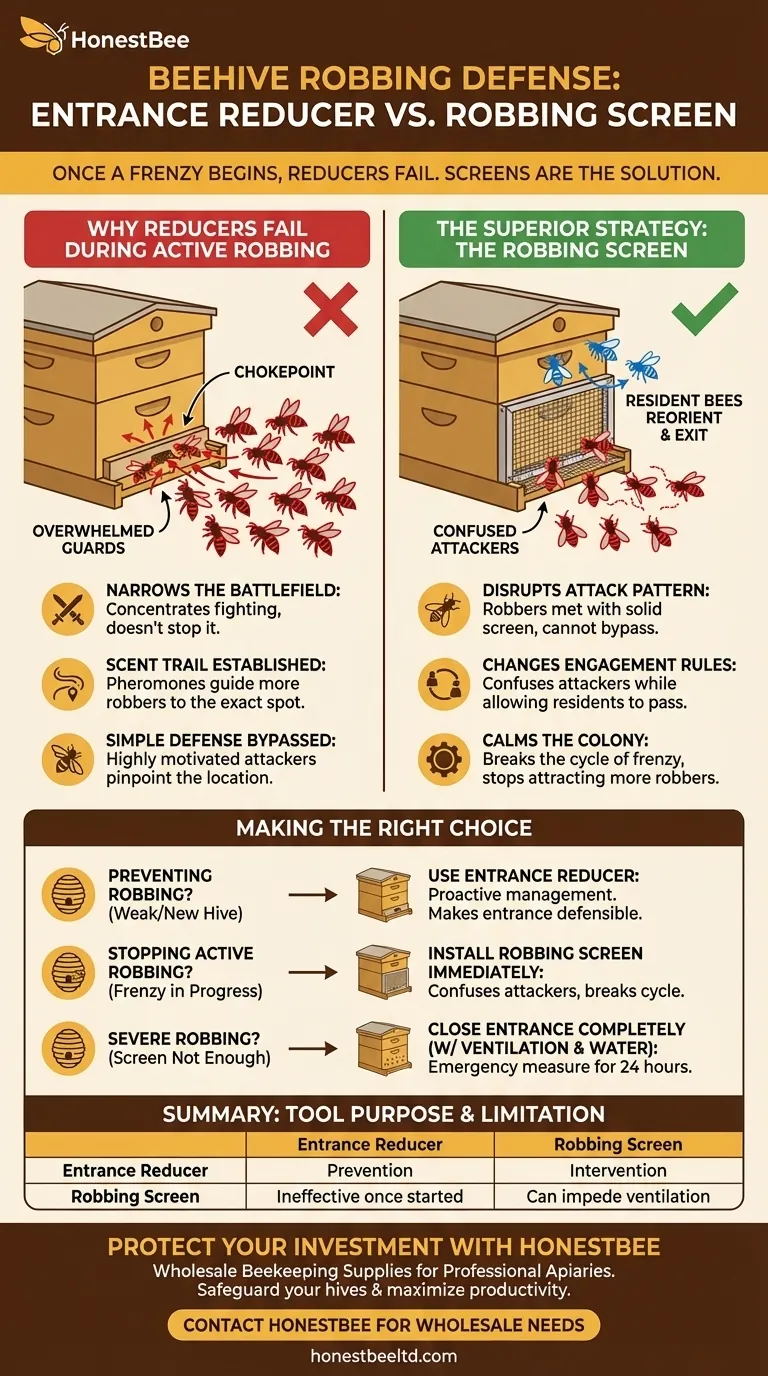
Related Products
- Professional Pneumatic Wire Embedder for Beehive Frames
- Multi-Functional Rotary Hive Entrance Disc for Beekeeping
- Multi-Functional Sliding Hive Entrance for Beekeeping
- Wooden Queen Bee Excluder for Beekeeping
- Heavy Duty Stainless Steel Queen Bee Catcher Clip
People Also Ask
- What types of products are available for beekeeping needs? Essential Equipment for Apiaries & Distributors
- What is the best direction for a bee hive? Maximize Colony Health and Honey Production
- What precautions should be taken when wiring beehive frames? Essential Steps for Comb Durability
- How are nails prepared for wiring the frame? Master the First Step to a Durable Hive
- How do top-bar hives differ from conventional framed hives? Choose the Right Hive for Your Beekeeping Goals




